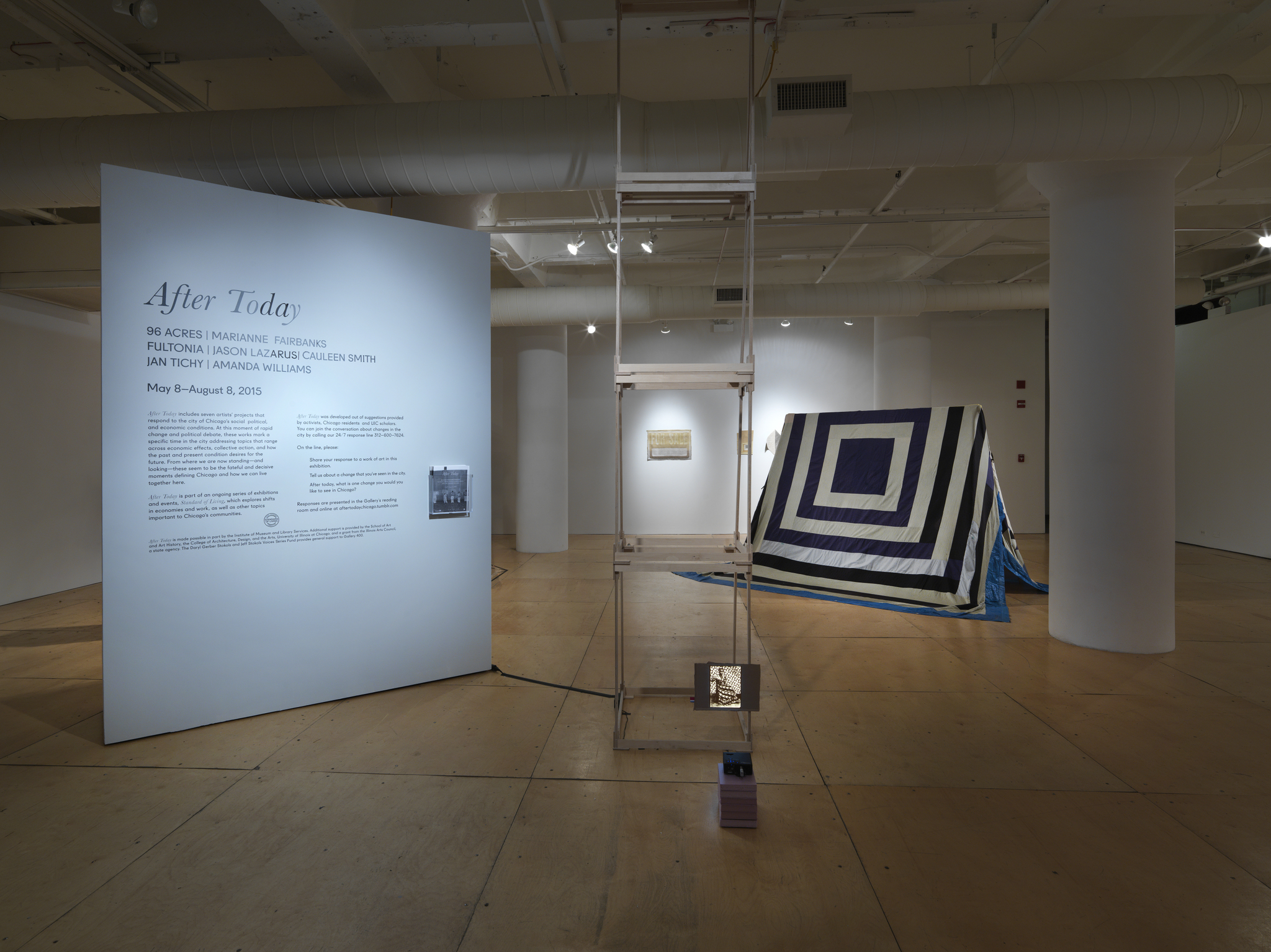Art & Art History
After Today

Gallery 400
400 South Peoria Street, Chicago, IL 60607
Marianne Fairbanks, Fultonia, 96 Acres, Jason Lazarus, Cauleen Smith, Jan Tichy, and Amanda Williams.
After Today includes seven artists’ projects that respond to the city of Chicago’s social, political, and economic conditions. At this moment of rapid change and political debate—with increasing income inequality, in the long wake of the 2008 recession, as neighborhoods across the city continue to transform, with the rise of labor movements, as the tech sector expands in Chicago, with the transformations of Chicago ’s public sector, as wider attention is paid to police violence, and given the long story of race in the city—the artist ’s address the city’s changes and its possible future. The seven artists, all Chicago-based, use a variety of organization and material strategies and focus on topics that range across economic effects, collective action, and how the past and present condition desires for the future—with a number of projects highlighting aspects of the city ’s criminal justice system.
From sculptures incorporating fabrics dyed with the plants surrounding foreclosed homes to audio stories of families affected by the Cook County Jail to a sculpture and photographic portraiture project that is designed as a tool to achieve collective goals, the artists ’ works mark a specific moment in the city—the time we live in—but also address a time that is informed by both the past and future. From where we are now standing (and looking), these seem to be the fateful, decisive, significant moments defining Chicago and how we can live together here.
After Today is part of an ongoing series of exhibitions and events, Standard of Living, that explores shifts in economies and in work. Topics covered in the series include how and where the economic exchange takes place, new models for sustainable economies, employment-driven migration, and relationships between place, work, and economic viability, among others. A key component of this series is community involvement. Partnerships, relationships, and dialogues with community organizations, labor unions, and artists help guide the development of exhibitions and events.